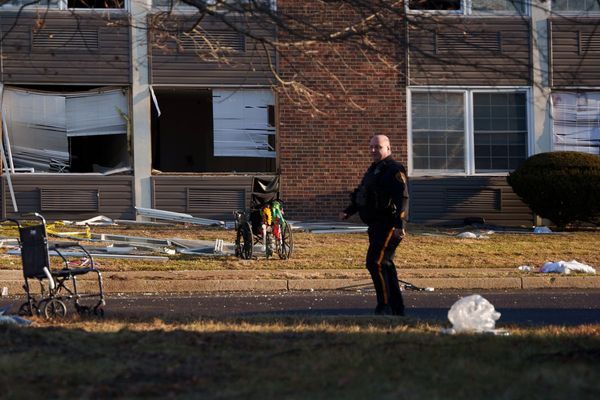
For more than two months, the world has watched the virtual obliteration of occupied Gaza and its residents by Israel. The visuals, the videos, and the testimonies of residents, doctors, UN officials, and journalists are flooding social media portals. Those who want to know what is happening on the ground seek out these sources, watch, and read.
But if you depend only on mainstream television channels or newspapers, the horror of what is unfolding will pass you by. This is because even if there is reporting, it is selective and one-sided, playing up one side and playing down another.
In India, the reporting, what little there is, consists of reprints from the New York Times or a precis of reports from different western-based news agencies. You rarely find anything from Al Jazeera, which has focused on Gaza since Israel’s bombardment began, or other sources in the region.
To illustrate, look back at what Indian newspapers reported during the brief ceasefire when Palestinian prisoners in Israeli jails were exchanged for Israelis held hostage by Hamas after the October 7 attack. Most reports that appeared in our newspapers, which were reprinted from western sources, focussed on the Israelis who had been released. We read who they were and some of what they experienced while held captive. But there was next to nothing about the young Palestinians who were released in the exchange. These Palestinians had been held in Israeli prisons without trial. Their lives had been upended. They saw no hope of ever being released. Their stories also needed to be heard. But in India, we heard only one side.
Occasionally, you come across reports like this one, taken from Reuters. It tells us that even those who survived the relentless bombing by Israel that has already killed around 18,000 Palestinians, many of them children, now face the prospect of the spread of diseases that will result in more deaths. It quotes data from the World Health Organisation that between November 29 and December 10, incidents of diarrhoea in children under 5 years have increased by 66 percent. In the absence of clean water or healthcare, these children might not survive the inevitable dehydration. Also, according to the WHO, 21 out of the 36 hospitals in Gaza are now closed.
A notable exception in Indian media was Frontline magazine. It made the Israel war on Gaza its cover story in its November 17 issue, and for this, it was trolled by supporters of the government. It has continued to carry informative reports on the war.
Why are we seeing this partial and one-sided coverage in our media? One explanation is the dependence on western news agencies and newspapers for foreign news. If you look at the world news page in any newspaper, most reports are attributed to these sources. Practically no newspaper in India can now afford to send correspondents to provide direct coverage of such a conflict. Inevitably, this means that Indian readers get international news through the filter of a western perspective.
In the 1970s, there was talk of a New International Information Order, and some attempts were made to set up news agencies staffed by journalists from the Global South who could bring a different perspective to world news. Most of these efforts failed due to a lack of funding. As a result, we are back to our dependence on western news sources for news of developments outside our borders.
Even if this reality cannot be changed, is mainstream Indian media compelled to follow the line taken by the government on foreign policy issues? You would think not, given that we are constantly reminded that there is freedom of the press in this country. Yet, a survey of Indian media would show that, by and large, it toes the line of the government.
This has been especially obvious recently in the coverage of the Israel-Palestine conflict. The Modi government has chosen to back Israel, going against India’s historical support for Palestine (although in the last days, it has modified its stance and voted for a ceasefire in the UN General Assembly).
The one-sided reporting on the Israel-Palestine war, which has galvanised protests around the world demanding a ceasefire, and continues to be the lead story in media in many countries, also illustrates a deeper fault line in our media, linked to the business model of mainstream media. For several decades, we have watched “news” that sells the “product” gaining dominance, while other events and developments deemed too far or not of interest to readers or viewers are either ignored, or barely noted.
Thus, for instance, Manipur was in the news for a short while when the extent of violence in a state caught in a civil war just could not be ignored. But today, it has virtually disappeared from our news pages. Nothing is normal in that state. Yet, we read next to nothing about it.
Similarly, look at the coverage of the Supreme Court’s ruling on the abrogation of Article 370. The region affected by it is Jammu and Kashmir. Most newspapers carried details about the judgement, learned interpretations of it, some opinions – both critical and supportive, and statements made by a few politicians from the region. And all major newspapers printed the identical article by Prime Minister Narendra Modi on the judgement.
But so far, there is practically nothing about how ordinary people in Kashmir feel about the ruling. Those who want to know have either reached out to people they know or read their guarded comments on social media. Guarded because of the fear that pervades the region since 2019.
A rare and brave article that has appeared, predictably, on an independent digital news platform rather than in any of our national newspapers is this one written by Toufiq Rashid in The Wire. Titled “Why there is silence in Kashmir over the Supreme Court’s verdict,” this beautifully written, and evocative article is worth reading not just once but several times. Let me quote just one paragraph:
“The silence in Kashmir is loud and deafening and its people are isolated. Kashmir continues to be the paradise it was, people continue to remain the best hosts you will have but we are far from happy. With every passing day, as the voices in Kashmir are muffled, we are stepping closer and closer to complete political alienation.”
It is in these pockets of silence – Kashmir, Manipur, our tribal belts, the areas that seem entrenched forever “below poverty line” – that the real stories of what is happening in this country lie. These are the stories that we in the media need to report, and through them inform the comfortable that there are millions who are afflicted.
Even if we argue that the sorrows and tribulations of the people who are still alive in Gaza are some distance from us, what is our excuse for not keeping the focus on the areas engulfed in silence within our own boundaries?
The answer is so obvious that it does not need repeating.
Newslaundry is a reader-supported, ad-free, independent news outlet based out of New Delhi. Support their journalism, here.







